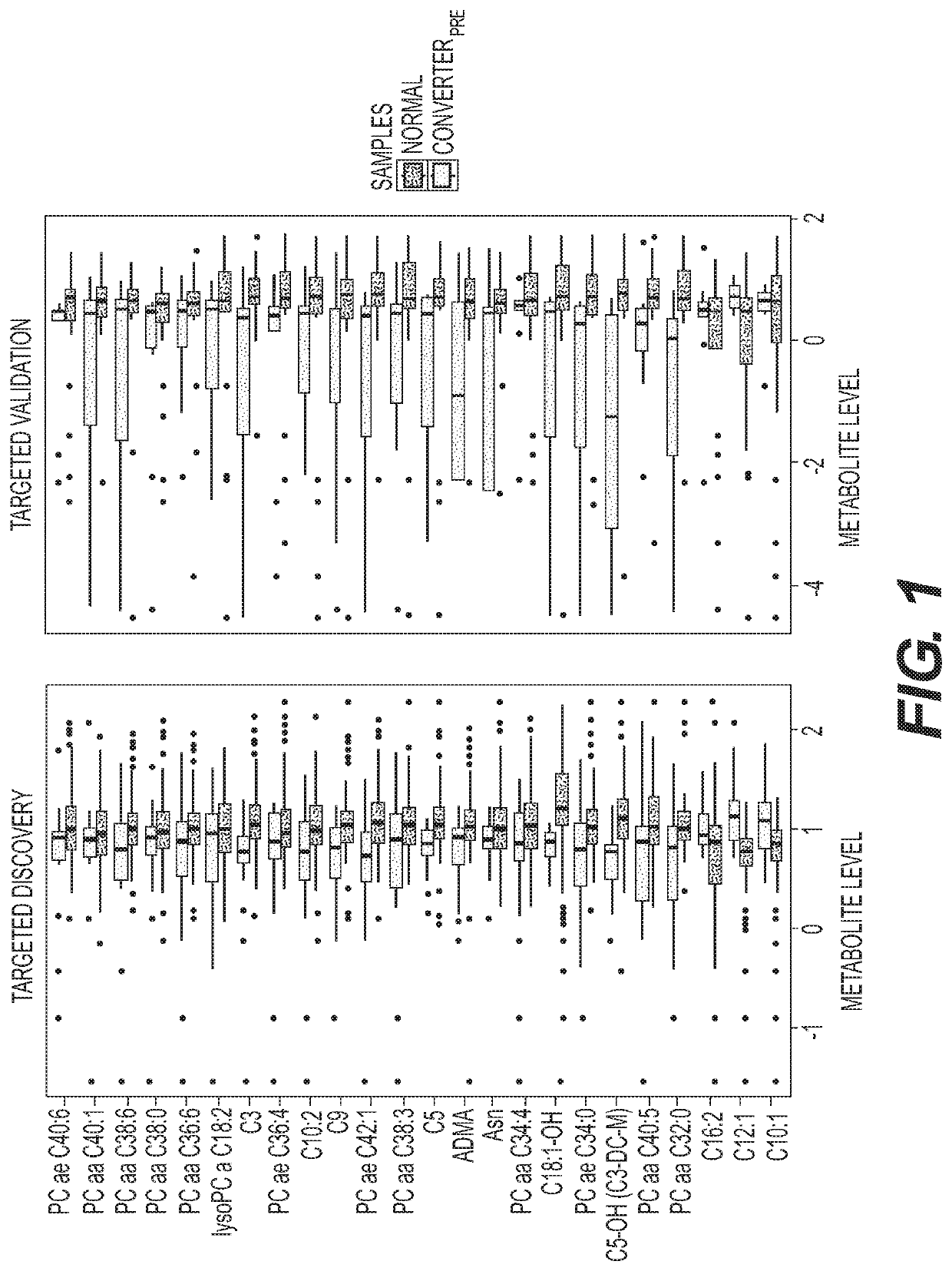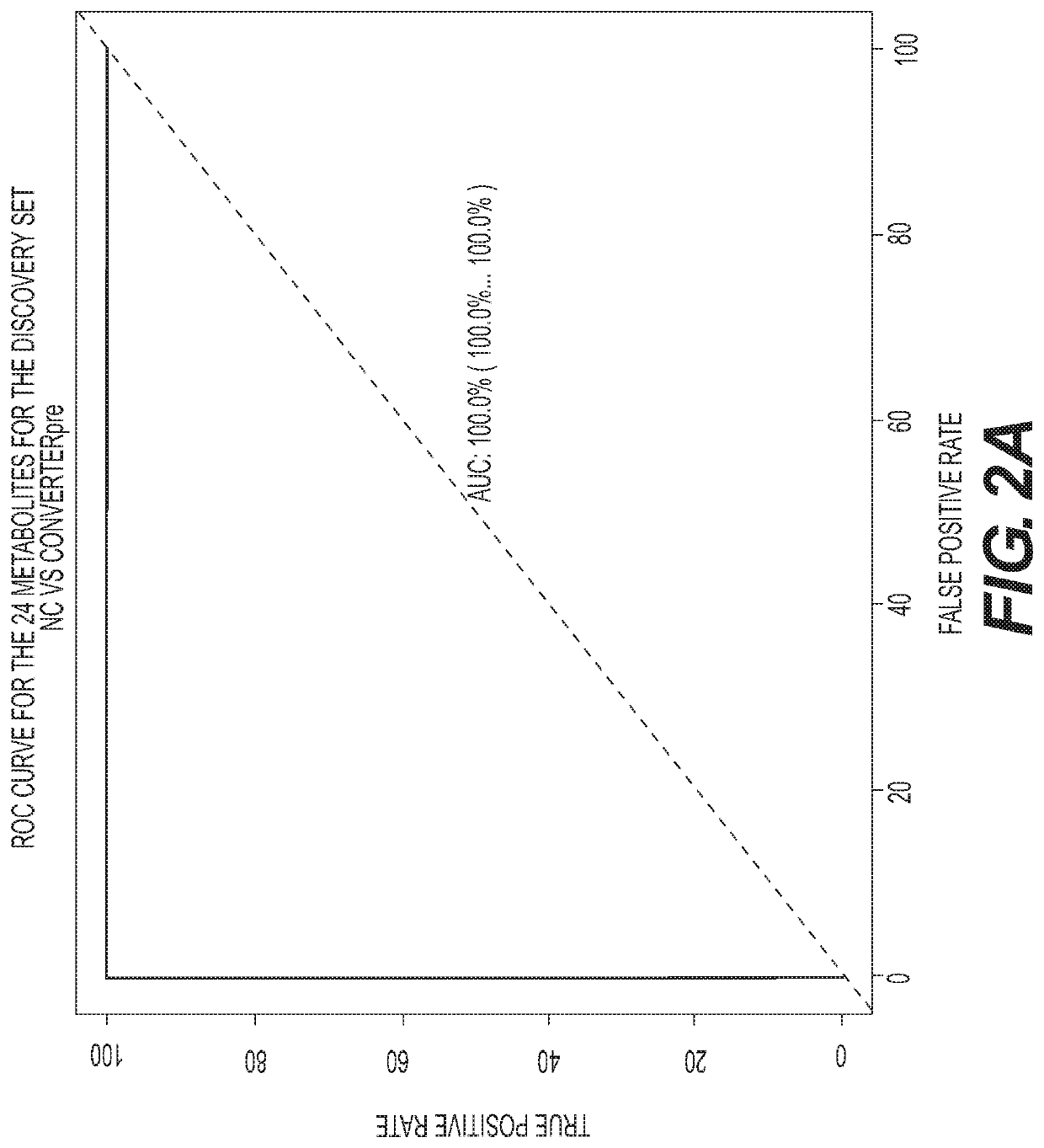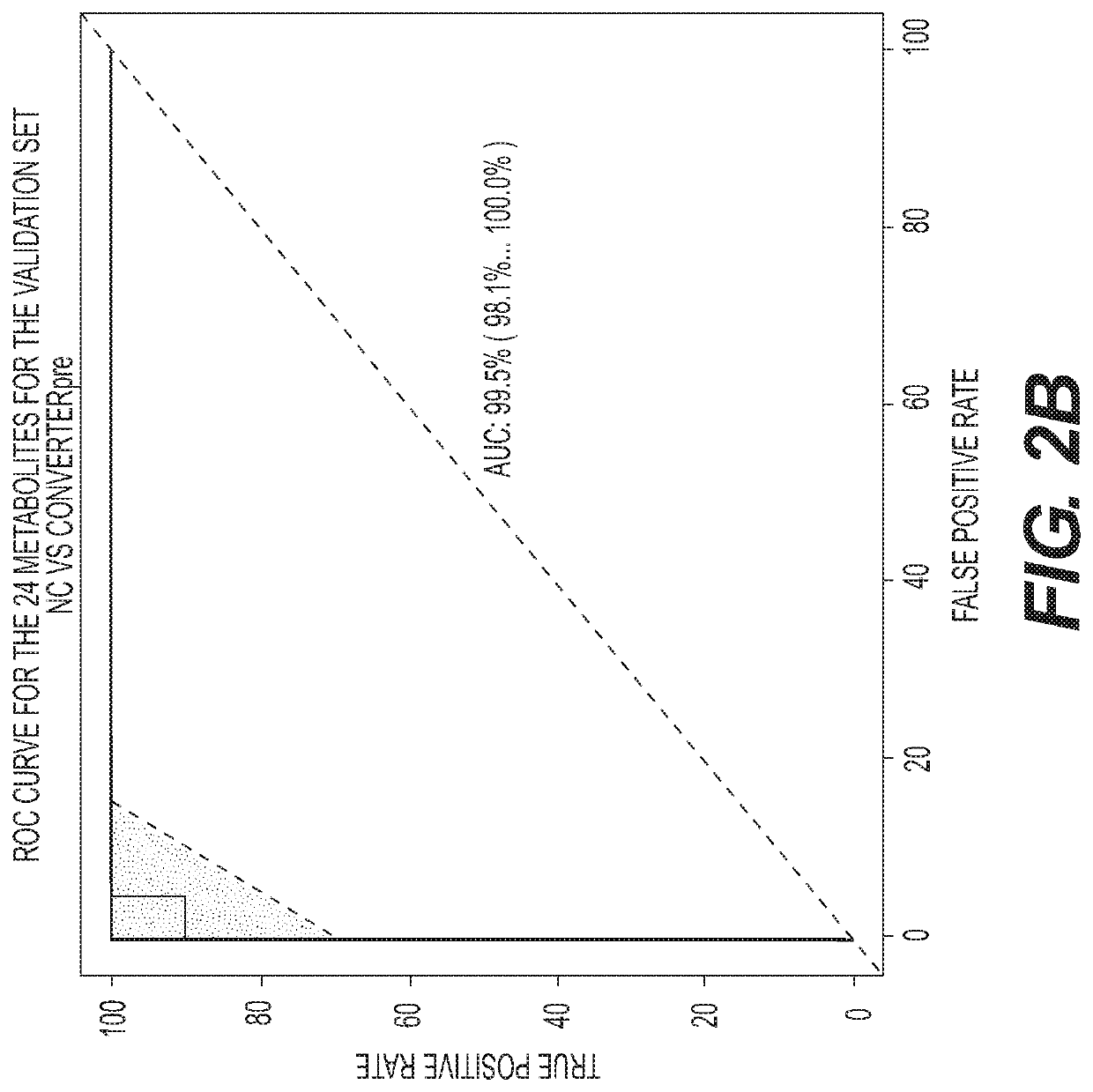Metabolic biomarkers for memory loss
a biomarker and metabolic technology, applied in the field of metabolic biomarkers for memory loss, can solve the problem that subjects have an increased risk of suffering memory impairment compared to a normal individual
- Summary
- Abstract
- Description
- Claims
- Application Information
AI Technical Summary
Benefits of technology
Problems solved by technology
Method used
Image
Examples
example 1
[0051]Neurocognitive Methods
[0052]A total of 525 volunteers participated in this study as part of the Rochester / Orange County Aging Study (R / OCAS), an ongoing longitudinal natural history study of cognition in community-dwelling older adults. Briefly, participants were followed with yearly cognitive assessments and blood samples were collected following an overnight fast and withholding of all medications. At baseline and each yearly visit, participants completed clinical assessments, such as activities of daily living, memory complaints, signs and symptoms of depression, and were administered a detailed cognitive assessment.
[0053]For this study, data from the cognitive tests were used to classify participants into groups for biomarker discovery. Standardized scores (Z-scores) were derived for each participant on each cognitive test and the composite Z-scores were computed for five cognitive domains (attention, executive, language, memory, visuoperceptual) (Table 2).
[0054]
TABLE 2Vis...
example 2
[0062]Reagents
[0063]LC / MS-grade acetonitrile (ACN), Isopropanol (IPA), water and methanol were purchased from Fisher Scientific (New Jersey, USA). High purity formic acid (99%) was purchased from Thermo-Scientific (Rockford, Ill.). Debrisoquine, 4-Nitrobenzoic acid (4-NBA), Pro-Asn, Glycoursodeoxycholic acid, Malic acid, were purchased from Sigma (St. Louis, Mo., USA). All lipid standards including 14:0 LPA, 17:0 Ceramide, 12:0 LPC, 18:0 Lyso PI and PC(22:6 / 0:0) were procured from Avanti Polar Lipids Inc. (USA).
[0064]Metabolite Extraction
[0065]Briefly, the plasma samples were thawed on ice and vortexed. For metabolite extraction, 25 μL of plasma sample was mixed with 175 μL of extraction buffer (25% acetonitrile in 40% methanol and 35% water) containing internal standards (10 μL of debrisoquine (1 mg / mL), 50 μL of 4, nitrobenzoic acid (1 mg / mL), 27.3 μl of Ceramide (1 mg / mL) and 2.5 μL of LPA (lysophosphatidic acid) (4 mg / mL) in 10 mL). The samples were incubated on ice for 10 minut...
example 3
[0078]Methods for Preclinical Alzheimer's Disease Index (PADI)
[0079]All participants were community-dwelling, older adults from the greater Rochester, N.Y. and Irvine, Calif. communities. Participants were recruited through local media (newspaper and television advertisements), senior organizations, and word of mouth. Inclusion criteria included age 70 or older, proficiency with written and spoken English and corrected vision and hearing necessary to complete the cognitive battery. Participants were excluded for the presence of known major psychiatric or neurological illness (including Alzheimer's disease or MCI, cortical stroke, epilepsy, and psychosis) at time of enrollment, current or recent (<1 month) use of anticonvulsants, neuroleptics, HAART, antiemetics, and antipsychotics for any reason, and serious blood diseases including chronic abnormalities in complete blood count and anemia requiring therapy and / or transfusion.
[0080]Operationalizing Groups
[0081]Alzheimer's disease is ...
PUM
| Property | Measurement | Unit |
|---|---|---|
| flow rate | aaaaa | aaaaa |
| flow rate | aaaaa | aaaaa |
| voltage | aaaaa | aaaaa |
Abstract
Description
Claims
Application Information
 Login to View More
Login to View More - R&D
- Intellectual Property
- Life Sciences
- Materials
- Tech Scout
- Unparalleled Data Quality
- Higher Quality Content
- 60% Fewer Hallucinations
Browse by: Latest US Patents, China's latest patents, Technical Efficacy Thesaurus, Application Domain, Technology Topic, Popular Technical Reports.
© 2025 PatSnap. All rights reserved.Legal|Privacy policy|Modern Slavery Act Transparency Statement|Sitemap|About US| Contact US: help@patsnap.com



